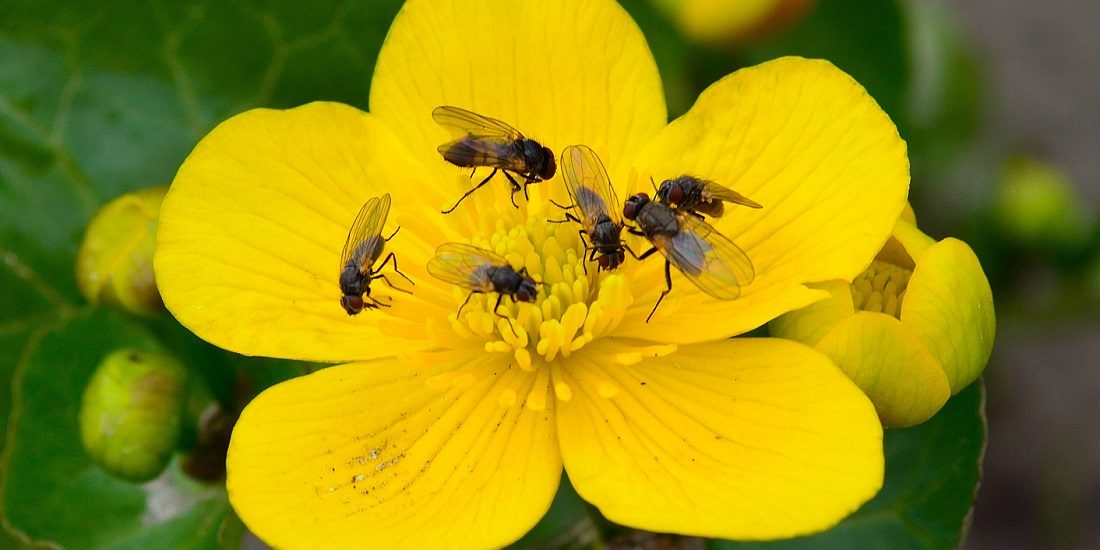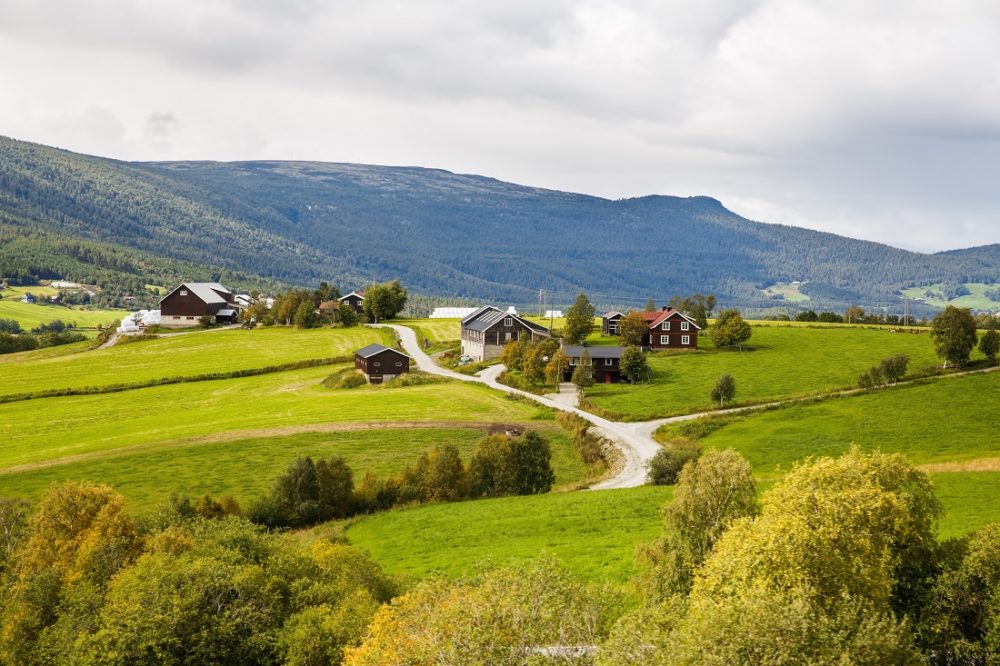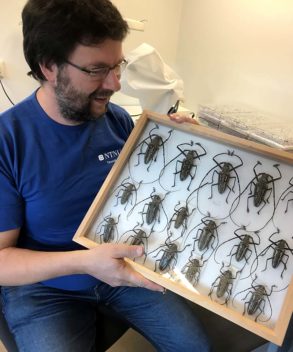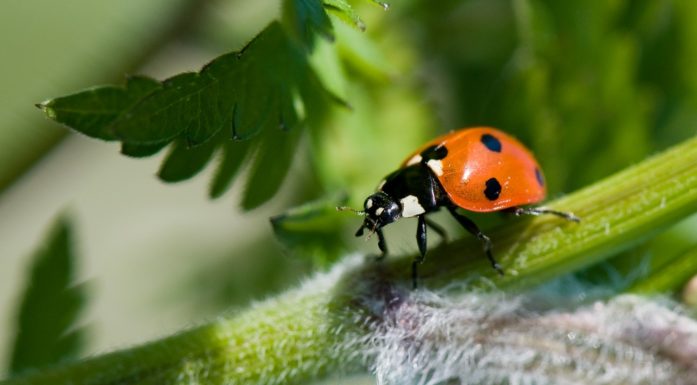When the hum of insects disappears
Several countries are warning of massive insect deaths. Right now we don’t know how matters stand in Norway. But that’s about to change.
You may like or dislike them, or not even care, but insects are important and many species are having a tough time.
We don’t know how insects in Norway are faring, but researchers are planning to finally find out. They may need to hurry. The situation appears dire in several countries.
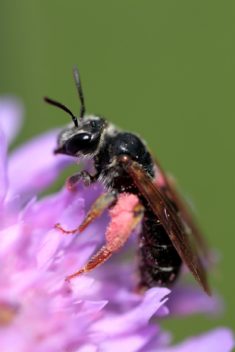
The Large scabious mining bee (Andrena hattorfiana) is struggling to survive because agriculture is changing. Photo: Agne Ødegaard, Norwegian Biodiversity Information Centre/ Species database
The most alarming warnings came from Puerto Rico in the Caribbean this year. Deep in the jungle, apparently as unaffected by human activity as it’s possible to be in the islands, researchers reported an insect decline of at least 75 per cent over the last 40 years.
This statistic resembles a collapse.
The decline takes into account the weight of the insects, which means that bigger species that are struggling can create a disproportionate difference.
But the decline was the same for several insect groups, including moths, butterflies and grasshoppers, according to biologist Bradford Lister’s report in the Washington Post. Spiders, birds, frogs and lizards are also running into trouble because they eat insects.
Why are they disappearing?
- You might also like: Mapping life’s barcodes in Norway
Bottlenecks and small areas
Many researchers believe that global warming is to blame. In Puerto Rico, the average temperature has increased by 2.2 degrees Celsius since the 1970s. This may not sound like a lot, but rainforest insects have adapted to very stable conditions and probably can’t keep up with such relatively fast temperature jumps.
“It also means that the extremes are increasing,” says Frode Ødegaard, a newly appointed associate professor at the NTNU University Museum’s Department of Natural History.
For example, now temperatures get much hotter whenever it gets really warm.
“Often it’s the bottleneck seasons that wipe out species that are already struggling,” says Ødegaard, who has 23 years of experience at NINA, the Norwegian Institute for Nature Research.
German and Dutch researchers have already determined that the total number of insects in 63 protected areas decreased by more than 75 per cent in less than 30 years. The protected nature reserves are most likely too small.
“Researchers I know in the Netherlands and Belgium say there’s almost no point in going out to catch insects anymore. They hardly find any when they do. Western Europe is in trouble,” says Ødegaard.
Insect decline in other countries has woken up the Norwegian authorities. This summer Norway implemented the National Pollinator Strategy to monitor the country’s insect status. The Norwegian Environment Agency is leading the initiative.
Article continues below photo.
Bees in Norway
A few years ago there were reports of a dramatic decline in the number of domestic honey bees from colony collapse disorder (CCD). We need to remember that domesticated bees are actually ‘livestock’, which we can largely regulate ourselves, but this is unprofitable to do when the hives are diseased.
However, this decrease is in addition to the decline in wild insects that usually contribute to both food production and wild plants.
“We have over 200 wild bee species that pollinate completely for free,” says Ødegaard.
“But we’ve probably lost at least 12 species just in the past 100 years or so. More than one third of the bee species in Norway are red-listed and could soon disappear. In Norway, the main problem is probably that the bees are losing their habitat, those places with the particular conditions that allow the different species to thrive. These places are disappearing for two main reasons,” he says.
- You might also like: Moths get wind of a partner from a kilometre away
Agriculture has big effect
Those two reasons are “intensification and reproduction,” says Ødegaard.
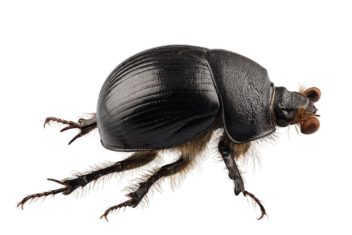
The Dor dung beetle, Geotrupes stercorarius, made a comeback when people began to keep horses again. Photo: Colourbox
The intensification of agriculture in areas of eastern and southwestern Norway has caused other agricultural landscapes to disappear.
Conversely, small farms have disappeared by the thousands in favour of gooseberry bushes and forestland. Norway has not been as forested as now for over 100 years. This may be good news for some species, but not for bees, which do not commonly inhabit forest areas.
The large scabious mining bee (Andrena hattorfiana) presumably used to be common all over southern Norway. It is one of the country’s largest bees – for as long as it’s still around. At last count, the species was found in only three places in eastern Norway. Changes in agriculture make it harder for the mining bee to find suitable places to live, in this case with sandy soil for nesting, which needs to be no more than 20 to 30 metres from flowerbeds with species preferred by the bee.
Norwegian landscape slowing impact
Problems have surfaced for several species of dung beetle in Norway when cows spend a good part of the year in tie-stall barns and eat only grass, which gives them diarrhoea. Only water scavenger beetles can thrive in that kind of soup, whereas the dung beetle needs more solid manure.
But the Dor beetle (Geotrupes stercorarius) has made a comeback since more people in Norway started keeping horses for fun. Human habits can directly affect the species.
Conditions may be better in Norway than in other European countries, but not necessarily by our own hand.
Norway’s “topography is what saves us. It is not that we’re doing such a great job,” Ødegaard says.
Mountains and fjords and lots of landscape variations mean that insect species have more nooks and crannies where they can tuck in. Maybe.
Starting summer 2019
You might think that scientists know how many insect species exist in Norway and the world, and in what numbers, but entomologists – the insect experts – are few and far between. Ødegaard has discovered around 20 bee species that weren’t previously recorded in Norway.
The estimated number of insect species on Earth varies from 5 to 10 million. Long-term studies that tell us how insect numbers have changed over time are remarkably rare and therefore also very valuable.
We know too little. But this will be changing, at least for Norway.
Currently, the insect survey is in the planning stage. Norway’s limited number of researchers will try to get an overview of their long and twisty country. A lot of details have to be put be into place before the first sample collection happens in the summer of 2019.
Then, if the results are good and the Norwegian Environment Agency buys in to the project, full-scale collections will start in the summer of 2020, says Ødegaard – who won’t be counting on a summer vacation for the next few years.
